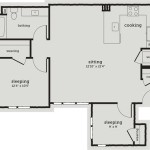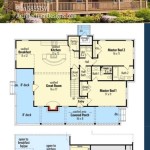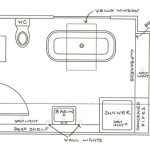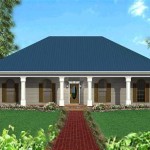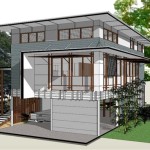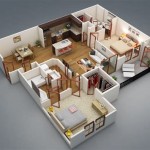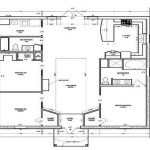4 Bedroom House Plan Design: Optimizing Space and Functionality
The design of a 4-bedroom house plan represents a significant undertaking, demanding careful consideration of various factors to create a comfortable, functional, and aesthetically pleasing living environment. A 4-bedroom house plan typically caters to families, offering ample space for children, guests, or home offices. The architectural design must balance privacy, communal areas, and efficient use of space. This article will explore critical aspects of 4-bedroom house plan design, focusing on key considerations for optimizing layout, traffic flow, and overall usability.
The initial stage of designing a 4-bedroom house plan involves assessing the needs and priorities of the occupants. This includes determining the desired size of the bedrooms, the number and types of bathrooms, the style of kitchen, and the layout of living and dining areas. Understanding these requirements forms the foundation for creating a tailored design that meets the specific lifestyle and preferences of the homeowners. Furthermore, consideration of the site's characteristics, such as its orientation, topography, and local building codes, is essential for informing the design process. This ensures the house is not only functional and aesthetically pleasing but also complies with all regulatory requirements and maximizes the natural advantages of the site.
The design must also address the long-term needs of the occupants. As families grow and change, so too do their housing requirements. Therefore, a flexible and adaptable design that can accommodate future modifications or extensions can prove to be invaluable. This might include incorporating features such as unfinished basement space that can be converted into additional living areas, or designing the layout in a way that allows for easy rearrangement of rooms. By anticipating future needs, the design can maintain its relevance and functionality for years to come, making it a worthwhile investment.
Strategic Bedroom Placement and Sizing
Bedroom placement is a crucial element of 4-bedroom house plan design. The master bedroom, typically the largest, is often located separately from the other bedrooms to provide privacy. This separation can be achieved by placing the master suite on one wing of the house or on a different floor. The other bedrooms, often designated for children or guests, can be grouped together. Strategic placement aims to minimize noise transfer and provide a sense of personal space for each occupant.
Bedroom sizing should reflect the intended use and the occupants' needs. The master bedroom generally encompasses a larger footprint and may include features such as a walk-in closet and an en-suite bathroom. Secondary bedrooms can be smaller but should still provide adequate space for a bed, dresser, and workspace if needed. Closet space is another critical factor. Adequate closet space in each bedroom is essential for storage and organization, contributing to a clutter-free living environment.
Consideration should be given to the orientation of the bedrooms relative to sunlight. Bedrooms oriented towards the east will receive morning sunlight, which can be beneficial for waking up naturally. Bedrooms oriented towards the west will receive afternoon sunlight, which can make them warmer in the evenings. The design should take these factors into account, along with the local climate, to ensure that the bedrooms are comfortable and energy-efficient throughout the year.
Furthermore, the accessibility of bedrooms is a key factor, particularly in multi-story homes. If accessibility is a concern, incorporating a ground-floor bedroom can be a valuable feature. This can be beneficial for elderly family members or individuals with mobility issues. The placement of bedrooms relative to common areas, such as living rooms and kitchens, should also be carefully considered to minimize noise disturbance and ensure a peaceful environment.
Optimizing Common Living Spaces
The design of common living spaces, such as the living room, dining room, and kitchen, is central to the functionality and appeal of a 4-bedroom house plan. These areas serve as the gathering places for family and friends and should be designed to promote interaction and comfort. An open-concept layout, where the living room, dining room, and kitchen flow seamlessly into one another, is a popular choice for modern homes. This design fosters a sense of spaciousness and encourages social interaction.
The size and layout of the living room should be proportionate to the overall size of the house. The living room should accommodate comfortable seating, such as sofas and armchairs, as well as a focal point, such as a fireplace or entertainment center. Adequate lighting is essential, both natural and artificial. Large windows can bring in ample natural light, while strategically placed lamps and overhead fixtures can provide illumination during the evening.
The dining room should be designed to comfortably accommodate the family and guests. The size of the dining room table is a key consideration, as well as the placement of chairs and other furniture. The dining room should be located in close proximity to the kitchen for ease of serving and cleanup. Natural light is also desirable in the dining room, creating a pleasant and inviting atmosphere.
The kitchen is often considered the heart of the home, so its design is particularly important. The layout of the kitchen should be efficient and functional, with ample counter space and storage. The work triangle, which connects the sink, stove, and refrigerator, is a fundamental principle of kitchen design. The kitchen should also be well-ventilated to remove cooking odors and moisture. A kitchen island can provide additional counter space, storage, and seating, making it a versatile feature.
Integrating outdoor living spaces, such as patios or decks, with the common living areas can further enhance the functionality and appeal of the house. These outdoor spaces can serve as extensions of the living room or dining room, providing additional space for relaxation and entertainment. Large sliding doors or French doors can seamlessly connect the indoor and outdoor areas, creating a cohesive living environment.
Bathroom Design, Number and Placement
The design, number, and placement of bathrooms are critical considerations in any 4-bedroom house plan. The master bedroom typically includes an en-suite bathroom, providing privacy and convenience for the homeowners. The other bedrooms may share one or more bathrooms, depending on the size of the house and the needs of the occupants.
The design of the bathrooms should be functional and aesthetically pleasing. The layout should maximize space and provide adequate storage. Vanities, toilets, and showers or bathtubs should be arranged in a way that is both efficient and comfortable. Lighting is essential, both natural and artificial. Mirrors should be strategically placed to enhance the sense of space and light.
The number of bathrooms required depends on the number of occupants and their lifestyles. A rule of thumb is to have at least one full bathroom for every three bedrooms. However, some families may prefer to have more bathrooms, particularly if they entertain guests frequently or have teenagers. A half-bathroom, consisting of a toilet and sink, can be a useful addition near the common living areas.
The placement of bathrooms should be convenient for all occupants. The master bathroom should be directly accessible from the master bedroom. The other bathrooms should be located near the other bedrooms and common areas. Avoid placing bathrooms directly adjacent to the living room or dining room to minimize noise disturbance. Consider also the placement of plumbing. Centralized plumbing can reduce costs associated with installation and maintenance.
Accessibility is another important factor to consider in bathroom design. Features such as grab bars, walk-in showers, and wider doorways can make the bathroom more accessible for elderly family members or individuals with mobility issues. Universal design principles, which aim to create spaces that are usable by people of all ages and abilities, can be incorporated into bathroom design to enhance its functionality and inclusivity. Materials such as non-slip flooring will greatly improve universal design implementation.
In conclusion, designing a 4-bedroom house plan involves a multifaceted approach, balancing aesthetic considerations with practical needs. Careful planning and attention to detail are essential for creating a home that is both functional and comfortable for the occupants.

Best 25 4 Bedroom House Plans Ideas On Beach

4 Bedroom House Plan Examples

4 Bedroom House Plans Home Designs Celebration Homes 5
4 Bedroom House Plans Top 8 Floor Design Ideas For Four Bed Homes Architecture

4 Bedroom House Autocad Ground Floor Plan Design Cadbull

4 Bedroom Southern Style House Plan With Big Front Porch

Small Home Design Plan 9 4x8 2m With 4 Bedrooms Bedroom House Plans Country

4 Bedroom Apartment House Plans

4 Bedroom House Designs In Kenya To Inspire Your Next Build Co Ke

4 Bedroom House Plans Real Estate Taania Be Forward

